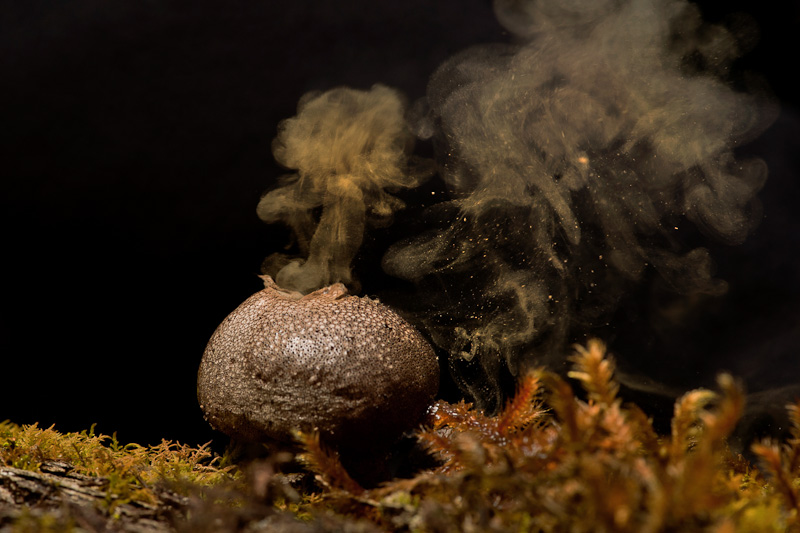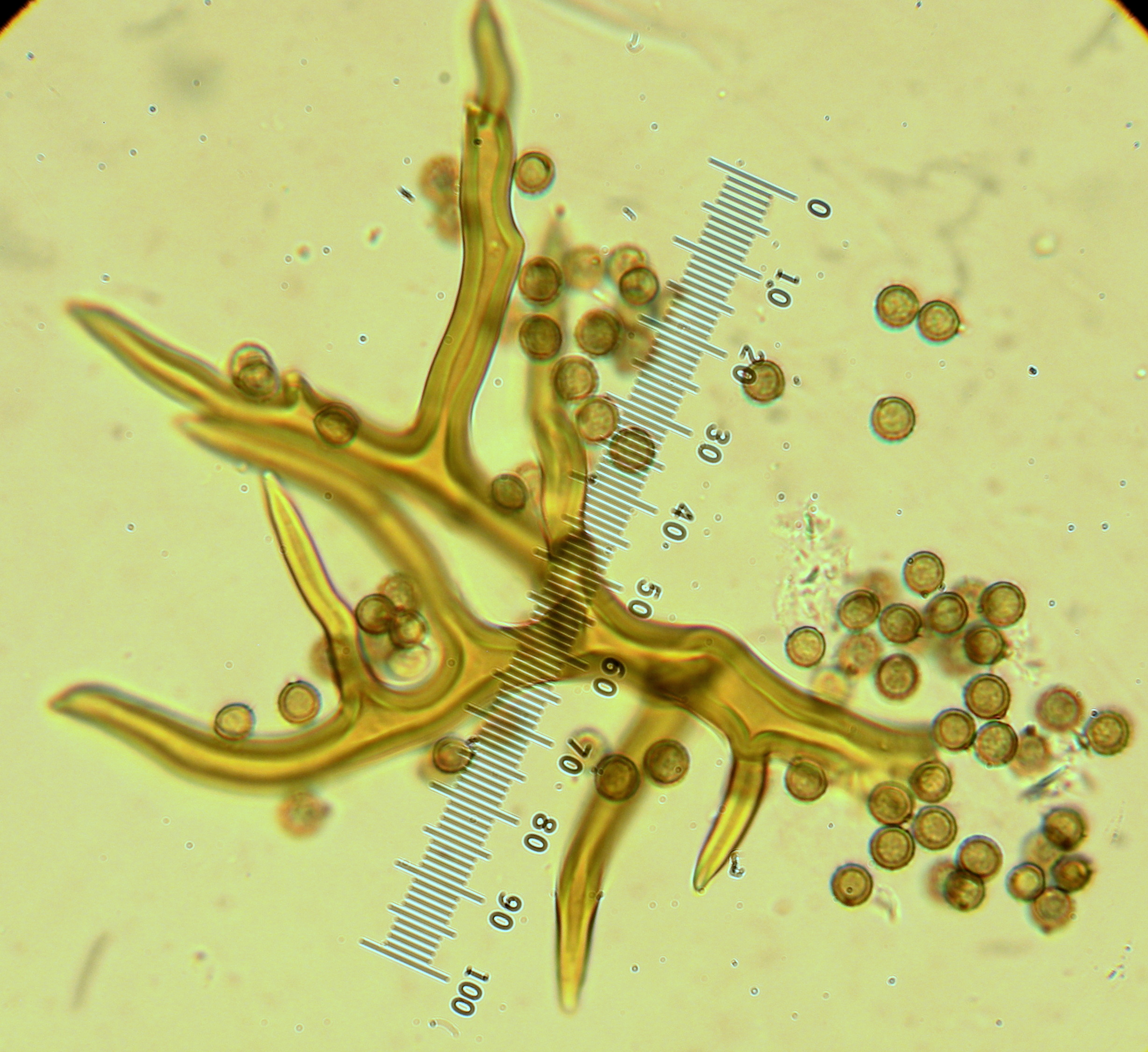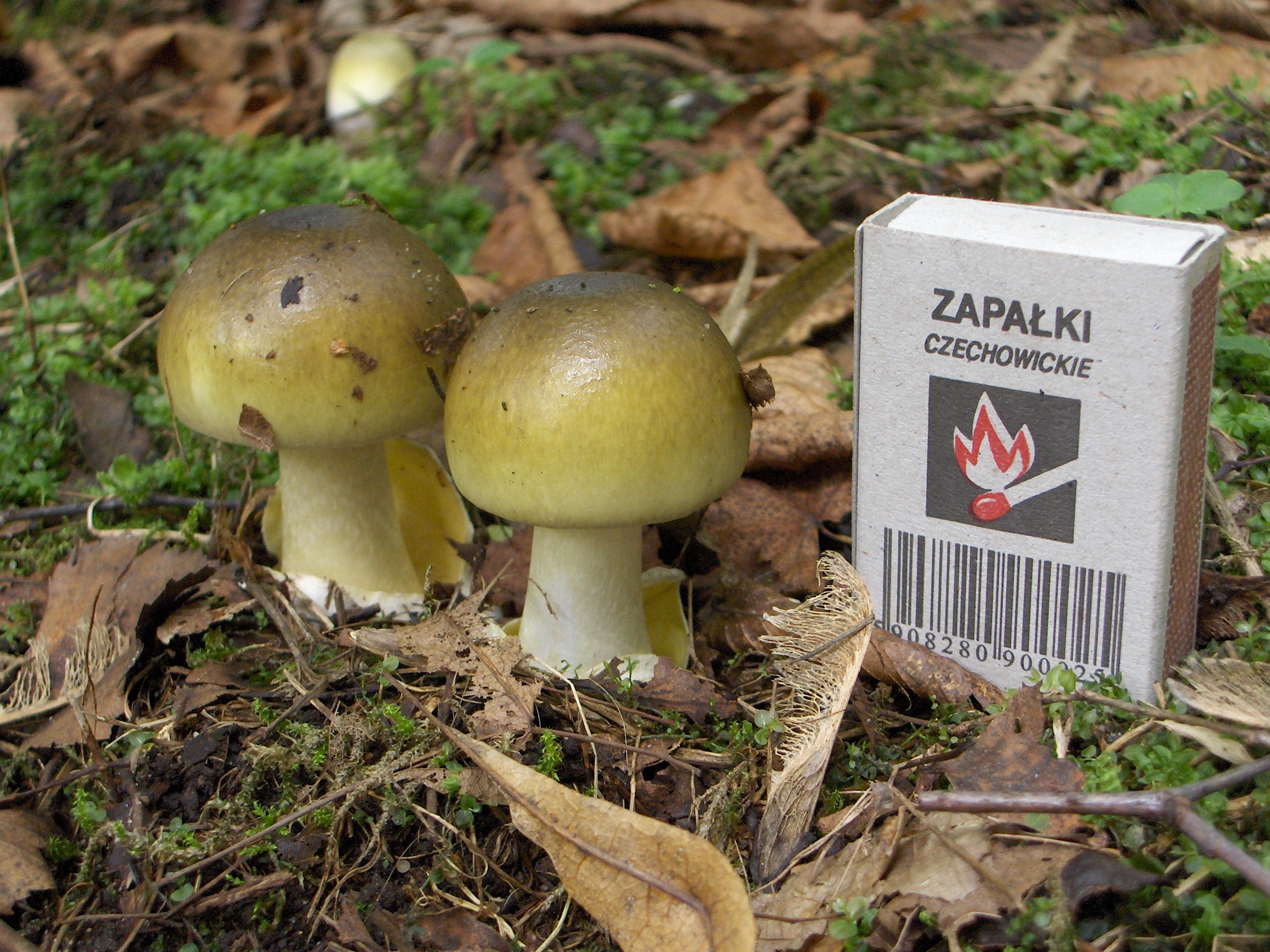|
Puffballs
Puffballs are a type of fungus featuring a ball-shaped fruit body that (when mature) bursts on contact or impact, releasing a cloud of dust-like spores into the surrounding area. Puffballs belong to the division Basidiomycota and encompass several genera, including '' Calvatia'', ''Calbovista'' and ''Lycoperdon''. The puffballs were previously treated as a taxonomic group called the Gasteromycetes or Gasteromycetidae, but they are now known to be a polyphyletic assemblage. The distinguishing feature of all puffballs is that they do not have an open cap with spore-bearing gills. Instead, spores are produced internally, in a spheroidal fruit body called a ''gasterothecium'' (gasteroid 'stomach-like' basidiocarp). As the spores mature, they form a mass called a gleba in the centre of the fruitbody that is often of a distinctive color and texture. The basidiocarp remains closed until after the spores have been released from the basidia. Eventually, it develops an aperture, or dries, ... [...More Info...] [...Related Items...] OR: [Wikipedia] [Google] [Baidu] |
Lycoperdon Perlatum
''Lycoperdon perlatum'', popularly known as the common puffball, warted puffball, gem-studded puffball or devil's snuff-box, is a species of puffball fungus in the family Agaricaceae. A widespread species with a cosmopolitan distribution, it is a medium-sized puffball with a round ascocarp (fungus), fruit body tapering to a wide stalk, and dimensions of wide by tall. It is off-white with a top covered in short spiny bumps or "jewels", which are easily rubbed off to leave a netlike pattern on the surface. When mature it becomes brown, and a hole in the top opens to release spores in a burst when the body is compressed by touch or falling raindrops. The puffball grows in fields, gardens, and along roadsides, as well as in grassy clearings in woods. It is edible mushroom, edible when young and the gleba, internal flesh is completely white, although care must be taken to avoid confusion with immature fruit bodies of poisonous mushroom, poisonous ''Amanita'' species. ''L. ... [...More Info...] [...Related Items...] OR: [Wikipedia] [Google] [Baidu] |
Calbovista
''Calbovista'' is a fungal genus containing the single species ''Calbovista subsculpta'', commonly known as the sculptured puffball, sculptured giant puffball, and warted giant puffball. It is a common puffball of the Rocky Mountains and Pacific Coast ranges of western North America. The puffball is more or less round with a diameter of up to , white becoming brownish in age, and covered with shallow pyramid-shaped plates or scales. It fruits singly or in groups along roads and in open woods at high elevations, from summer to autumn. Although the puffball was originally described as new to science by Elizabeth Eaton Morse in 1935, it was not published validly until 60 years later. The species is named for its resemblance to '' Calvatia sculpta'', from which it can be usually distinguished in the field by its less prominent pyramidal warts, and microscopically by the antler-like branches of its capillitium (thread-like material among the spores). ''Calbovista subsculpta'' is ... [...More Info...] [...Related Items...] OR: [Wikipedia] [Google] [Baidu] |
Lycoperdon
''Lycoperdon'' is a genus of puffball mushrooms. The genus has a widespread distribution and contains about 50 species. In general, it contains the smaller species such as the pear-shaped puffball and the gem-studded puffball. It was formerly classified within the now-obsolete order Lycoperdales, as the type genus which, following a restructuring of fungal taxonomy brought about by molecular phylogeny, has been split. ''Lycoperdon'' is now placed in the family Agaricaceae of the order Agaricales. The scientific name has been created with Greek words (''lycos'' meaning ''wolf'' and ''perdomai'' meaning ''to fart'') and based on several European dialects in which the mushroom name sounds like ''wolf-farts''. Most species are edible, ranging from mild to tasting distinctly of shrimp. Species * '' Lycoperdon caudatum'' (Syn. ''Lycoperdon pedicellatum'') J.Schröt. * '' Lycoperdon curtisii'' * '' Lycoperdon echinatum'' Pers. * '' Lycoperdon ericaceum'' (Syn. ''Lycoperdon musc ... [...More Info...] [...Related Items...] OR: [Wikipedia] [Google] [Baidu] |
Calvatia
''Calvatia'' is a genus of puffball mushrooms that includes the giant puffball ''C. gigantea''. It was formerly classified within the now-obsolete order Lycoperdales, which, following a restructuring of fungal taxonomy brought about by molecular phylogeny, has been split; the puffballs, ''Calvatia spp.'' are now placed in the family Lycoperdaceae of the order Agaricales. Most species in the genus ''Calvatia'' are edible when young, though some are best avoided, such as '' Calvatia fumosa'', which has a very pungent odor. The name ''Calvatia'' derives from the Latin ''calvus'' meaning "bald" and ''calvaria'', meaning "dome of the skull". Taxonomy ''Calvatia'' was circumscribed by Swedish mycologist Elias Magnus Fries in 1849. Fries included a single species in the genus, '' Calvatia craniiformis'', which was originally described as ''Bovista craniiformis'' by Lewis David de Schweinitz in 1832. Species , Index Fungorum lists 58 species of ''Calvatia''. * '' C. aga ... [...More Info...] [...Related Items...] OR: [Wikipedia] [Google] [Baidu] |
Bee Smoker
A bee smoker (usually called simply a smoker or a smokepot) is a device used in beekeeping to calm honey bees. It is designed to generate smoke from the smouldering, smoldering of various fuels, hence the name. It is commonly designed as a stainless steel cylinder with a lid that narrows to a small gap. The base of the cylinder has another small opening that is adjacent to a bellow nozzle. Pumping of the bellows forces air through the bottom opening. The cylinder may also have a wire frame around to protect hands from burning. Some smokers have a hook on the side allowing the user to hang the device on the side of a beehive for easy access during an inspection or attach it to an All-purpose lightweight individual carrying equipment, ALICE belt when not in use. History Long before the invention of the bee smoker, humans had discovered that smoke calmed bees. It is not clear when this practice started but it has been used in various parts of the world where honey is collected in the ... [...More Info...] [...Related Items...] OR: [Wikipedia] [Google] [Baidu] |
Gasteromycetes
The gasteroid fungi are a group of fungi in the Basidiomycota. Species were formerly placed in the obsolete class Gasteromycetes Fr. (literally "stomach fungi"), or the equally obsolete order Gasteromycetales Rea, because they produce spores inside their basidiocarps (fruit bodies) rather than on an outer surface. However, the class is polyphyletic, as such species—which include puffballs, earthballs, earthstars, stinkhorns, bird's nest fungi, and false truffles—are not closely related to each other. Because they are often studied as a group, it has been convenient to retain the informal (non-taxonomic) name of "gasteroid fungi". History Several gasteroid fungi—such as the stinkhorn, ''Phallus impudicus'' L.—were formally described by Carl Linnaeus in his original ''Species Plantarum'' of 1753, but the first critical treatment of the group was by Christiaan Hendrik Persoon in his ''Synopsis methodica fungorum'' of 1801. Until 1981, this book was the s ... [...More Info...] [...Related Items...] OR: [Wikipedia] [Google] [Baidu] |
Agaricales
The Agaricales are an order (biology), order of fungi in the division (mycology), division Basidiomycota. As originally conceived, the order contained all the agarics (gilled mushrooms), but subsequent research has shown that not all agarics are closely related and some belong in other orders, such as the Russulales and Boletales. Conversely, DNA research has also shown that many non-agarics, including some of the clavarioid fungi (clubs and corals) and gasteroid fungi (puffballs and false truffles) belong within the Agaricales. The order has 46 Extant taxon, extant family (biology), families, more than 400 genus, genera, and over 25,000 described species, along with six extinct genera known only from the fossil record. Species in the Agaricales range from the familiar ''Agaricus bisporus'' (cultivated mushroom) and the deadly ''Amanita virosa'' (destroying angel) to the coral-like ''Clavaria zollingeri'' (violet coral) and bracket-like ''Fistulina hepatica'' (beefsteak fungus). H ... [...More Info...] [...Related Items...] OR: [Wikipedia] [Google] [Baidu] |
Cladistic
Cladistics ( ; from Ancient Greek 'branch') is an approach to biological classification in which organisms are categorized in groups ("clades") based on hypotheses of most recent common ancestry. The evidence for hypothesized relationships is typically shared derived characteristics ( synapomorphies) that are not present in more distant groups and ancestors. However, from an empirical perspective, common ancestors are inferences based on a cladistic hypothesis of relationships of taxa whose character states can be observed. Theoretically, a last common ancestor and all its descendants constitute a (minimal) clade. Importantly, all descendants stay in their overarching ancestral clade. For example, if the terms ''worms'' or ''fishes'' were used within a ''strict'' cladistic framework, these terms would include humans. Many of these terms are normally used paraphyletically, outside of cladistics, e.g. as a ' grade', which are fruitless to precisely delineate, especially when ... [...More Info...] [...Related Items...] OR: [Wikipedia] [Google] [Baidu] |
Honey Bee
A honey bee (also spelled honeybee) is a eusocial flying insect within the genus ''Apis'' of the bee clade, all native to mainland Afro-Eurasia. After bees spread naturally throughout Africa and Eurasia, humans became responsible for the current cosmopolitan distribution of honey bees, introducing multiple subspecies into South America (early 16th century), North America (early 17th century), and Australia (early 19th century). Honey bees are known for their construction of perennial colonial nests from wax, the large size of their colonies, and surplus production and storage of honey, distinguishing their hives as a prized foraging target of many animals, including honey badgers, bears and human hunter-gatherers. Only 8 surviving species of honey bees are recognized, with a total of 43 subspecies, though historically 7 to 11 species are recognized. Honey bees represent only a small fraction of the roughly 20,000 known species of bees. The best-known honey bee is t ... [...More Info...] [...Related Items...] OR: [Wikipedia] [Google] [Baidu] |
Amanita
The genus ''Amanita'' contains about 600 species of agarics, including some of the most toxic known mushrooms found worldwide, as well as some well-regarded Edible mushroom, edible species (and many species of unknown edibility). The genus is responsible for approximately 95% of fatalities resulting from mushroom poisoning, with the death cap accounting for about 50% on its own. The most potent toxin present in these mushrooms is . The genus also contains many edible mushrooms, but mycologists discourage mushroom hunters, other than experts, from selecting any of these for human consumption. Nonetheless, in some cultures, the larger local edible species of ''Amanita'' are mainstays of the markets in the local growing season. Samples of this are ''Amanita zambiana'' and other fleshy species in central Africa, ''Amanita basii, A. basii'' and similar species in Mexico, ''Amanita caesarea, A. caesarea'' and the "Blusher" ''Amanita rubescens, A. rubescens'' in Europe, a ... [...More Info...] [...Related Items...] OR: [Wikipedia] [Google] [Baidu] |







